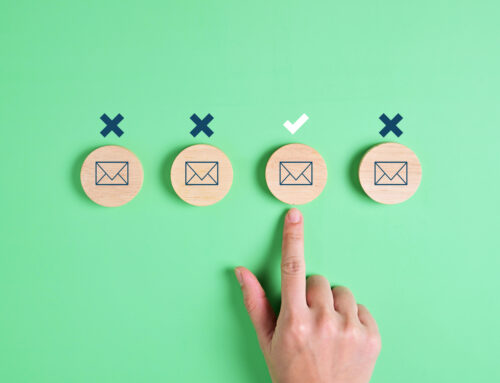 Last week, I asked for your thoughts on how your newsletter has changed, including how your organization’s use of social media has affected your newsletter, whether print or online.
Last week, I asked for your thoughts on how your newsletter has changed, including how your organization’s use of social media has affected your newsletter, whether print or online.
Of the 299 people who had answered this particular question when I pulled the data yesterday, a third said that social media had little to no effect, because
- the organization wasn’t using social media much or at all,
- the audiences for the newsletter and for social media were very different, or
- the organization used the communications channels in totally different ways.
The other two-thirds described several ways in which social media has changed their newsletters, mostly in positive ways. The responses, some of which I’m quoting below, fall into these six major categories.
Social Media is the Newsletter “Pressure Release Valve”
Many people said that social media released a lot of the pressure associated with their newsletter, in terms of both deadlines and content.
“We can be more flexible about when we get the newsletter out because we use social media for the time-sensitive stuff.”
“We used to hold an issue back a week or two if we knew something was coming that needed to be reported in a timely manner. Now we send the newsletter according to a set schedule and use social for breaking news and quick coverage.”
“We use social media to share more frequent updates than in our newsletter. Facebook serves as our ‘weekly newsletter’ and Twitter as our ‘daily newsletter.'”
“We feel much less pressure to cover everything and recognize everyone in the newsletter, because we are engaging with them in social media.”
“Social media lets us weed out the small things that can be communicated through Facebook versus in our monthly newsletter.”
“Articles that don’t make the cut for the newsletter get put on Facebook and tweeted.”
Social Media Allows More Focused or Specialized Content in the Newsletter
“We don’t need a wish list in the newsletter anymore. If we have a need, we just send it out on social media and get immediate responses. The newsletter is a better way to tell a more complete story and still the best way to communicate with our older donors.”
“Social media allows us to get the day to day information out there, and the newsletter allows us to let people know what’s coming up month by month.”
“We’ve made the newsletter less about ‘updates’ and more about general work/impact.”
“It’s been a game changer. It’s really helped us define the content, tone, how users engage with the content . . . the email newsletter is now more in-depth looks or points of view on topics, and less news-flash.”
‘We put all the update stuff out on social, so we can make the newsletter very donor-centered.”
Social Media Helps Build the Newsletter Mailing List
“‘A newsletter subscription link is available through our social media pages, so our numbers have increased.”
“Social media has helped us grow our subscriber list and extended the reach of our newsletter, since we post links to every issue on our LinkedIn and Facebook pages.”
“We talk about the email newsletter on social media and that always brings us more subscribers.”
Social Media Produces More Exposure for the Newsletter Content
“We put all of our newsletter content online so that people can share or tweet the individual stories, in addition to sharing the whole newsletter too.”
“We share the newsletter content on Facebook and Twitter a couple days after it goes out, so it gets more people clicking over to the website for the articles.”
“We use social media to promote discrete newsletter items, like our regular alumni spotlight feature.”
Content is Repurposed and Remixed Between the Newsletter and Social Media
“Our newsletters are composites of a lot of content we’ve already shared on social media.”
“We repurpose a lot of content between the two, with more in-depth stuff in the newsletter.”
“Everything is connected now. You may find different information on social media versus the newsletter, but it will be around the same topic.”
“Our newsletter has longer articles that often summarize or provide more reflection on the shorter pieces conveyed in social media.”
“We use social media to test messages and see what’s popular, then we sometimes use that information to make decisions about print content.”
Social Media Extends the Conversation Started in the Newsletter, and Vice Versa
“In our newsletter, we encourage readers to ‘keep the conversation going’ by visiting our social media sites.”
“We use them together. In our newsletter, we ask people to share story responses and feedback on our Facebook page.”
“We ask a question on a relevant topic in social media and then format responses into an article, giving a voice to members who might not otherwise by participating.”
What Do You Think?
Do you see some new ways to connect social media and your newsletter here that you could try? Leave your reflections on what you’ve read in the comments.

![12 Things You Can Stop Doing Right Now [Infographic]](https://www.nonprofitmarketingguide.com/wp-content/uploads/2025/01/Stop-Doing-2025-Info-hung-up-500x383.png)



